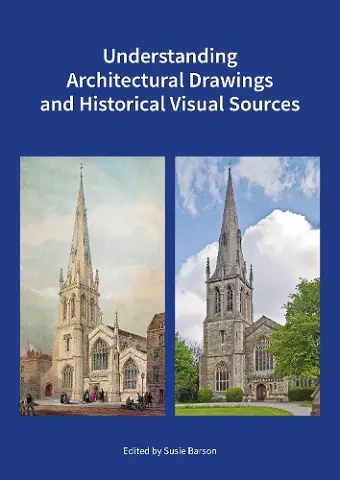Understanding Architectural Drawings and Historical Visual Sources
Format:Paperback
Publisher:Historic England
Published:15th Dec '18
Should be back in stock very soon

How do you find out about historic buildings and places? A good place to start is with visual evidence. Original drawings, topographical views, surveys, maps, photographs and other historic visual sources help to build up an understanding of how a building or location appears the way it does today.
Interpreting such material requires knowledge of historic design and mapping conventions, the place of the drawings in the construction process, the methods and techniques used to create engraved or topographical views, and the equipment and processes used in photography at particular times.
In Historical Visual Sources: a guide to understanding the historic built environment the authors – professional architectural and art historians – explain the provenance, purpose and terminology of a range of visual sources from the 16th to the 20th centuries, and how they can help – or sometimes hinder – an understanding of the original form and subsequent changes to a building, site or landscape. In addition, they list the most widely used archives, such as the Royal Institute of British Architects Drawings Collection, and online and published databases of historic visual sources.
This book will be of particular interest to historic buildings professionals, archaeologists, conservation architects, students of architectural history, and those involved in the preparation of conservation plans. More widely, it is hoped that the visual sources discussed and listed here may open a new and rich vein of material to different kinds of historians, genealogists, educators, students and authors.
Reviews
'Having worked in archives I thought I was knowledgeable regarding the variety of visual sources available to researchers, but this book opened my eyes [...] Accompanied by clear illustrations, this book was a pleasure to read [...] This book will be particularly useful to historic buildings professionals, archaeologists, conservation architects, architectural history students, and those preparing conservation plans.'
Rachel Broomfield, The SPAB Magazine (Society for the Protection of Ancient Buildings)
'Readable, concise and well-illustrated, it draws on the combined knowledge of a number of former and current Historic England staff to explain the optimum methods of research and investigation.'
Context, the Journal of the Institute of Historic Building Conservation
'Overall, it is a remarkable achievement to have packed so much into under 100 pages. The editor and contributors are to be congratulated in producing a valuable research guide. Had a volume like this been available 30 years ago, when I started studying buildings, it would have been greatly appreciated.' - David Cant, Vernacular Architecture
ISBN: 9781848023703
Dimensions: unknown
Weight: unknown
96 pages